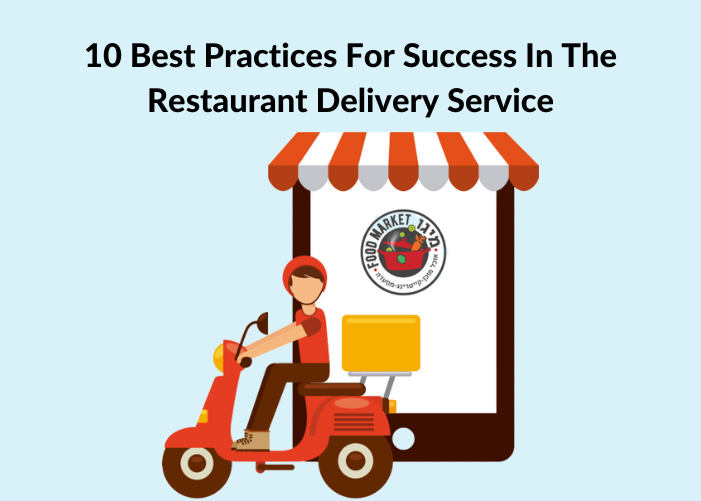Summary
Technology is omnipresent in our lives and, unsurprisingly, it has also created a seismic shift in one of life’s most important aspects – food!
The advent of cheap smartphones, vastly improved logistics and delivery services, numerous online payment options, and hectic lifestyles have created the business of “ordering food online” via numerous food apps.
But, the competition is immense as well, and to succeed you must follow certain best practices.
Important points to ensure success for Restaurant Delivery Service.
Just like all other businesses, the restaurant delivery service business has also embraced digital models and methods of operation in recent years. And, fuelled by the pandemic, it was even forced to adopt the Delivery Model with all necessary precautions. While the pandemic is at an end, a lot of the changes will remain in the future and become part of the New Normal for both the consumer and the restaurateur.
Operating automation processes, and end-2-end digitization now mark the restaurant business. Herein lay an opportunity for the smart food entrepreneur, and he has exploited the business potential via food-delivery Apps that deliver fresh, hot food to thousands of hungry customers at the convenience of their doorstep!
Conveniences like ordering from their favorite restaurant, flexibility via daily pricing deals, and food combos have caught the fancy of customers. Of course, you must ensure good service, good food quality, and variety to run it as a successful and sustainable outfit.
10 best-practices for a successful restaurant delivery business.
While there is a general list of best-practices that restaurants must follow to be successful in the delivery business, each needs to figure out which elements are more important for them, given their individual operating dynamics, consumer habits (etc.)
1) Automating operations: To make a long story short, unless your automation technology is cutting-edge you will fall short of success.
Using the correct technology not only allows you to automatically receive, and process, orders from the plethora of food-ordering Apps/sites that operate today, but it also integrates your ordering system with your POS and allows you to efficiently manage the daily orders that you execute.
The more efficiently you receive and execute orders in a timely manner, the more your customers will like you, and therefore, come back for repeat business. The more variety you offer, the more your consumers will be engaged with you. Without the requisite tech to handle all this, it is, well, impossible.
2) Easily negotiated menu: This is often an area of concern. In their effort to offer enough variety across food, drink, and pricing, restaurant business owners create a complicated menu that confuses customers!
Make sure you design your menu to assist quick and informed ordering that will, ultimately, result in greater volumes and repeat business. Use attractive pictures, categorize your food menu appropriately, describe your food clearly and concisely, highlight the ongoing deals (etc.)
3) Convenient search options: Remember, a lot of food-ordering is done by hungry consumers, an impromptu gathering of friends, tired consumers after a long day, or… well, you get the point, i.e., the urgency of it all. Therefore, the last thing you want your customers to do is spend unnecessary time figuring out what the best deals are, the best menu choices for them (etc.)
Your UI/UX must be designed to quickly and clearly highlight your offerings so that the customer can make quick and informed choices. Deals of the day, package deals, combos, etc., must be highlighted well.
4) Payment options: This often makes or breaks a deal. Therefore, you must offer all relevant (popular) payment options to your customers for their convenience.
Ecommerce payment systems, mobile wallets, debit/credit cards, contactless payments (or even cash-on-demand as the pandemic recedes) – you must include all options. Otherwise, you will find yourself being outmaneuvered by competitors!
5) Ease of order-tracking: By logical extension of the above point, the customer must be able to track his order via GPS as it makes its way from the kitchen to his home. If there are delays after placing the order and he has to wait endlessly, you will have created an irate customer! Be sure to communicate any delays due to traffic or weather so that he feels taken care of.
6) Food packaging and ‘add-ons’ are critical: Don’t forget that the first time your customers “actually” see the product is once it is delivered! This presents a great opportunity for brands to create a good, positive impression.
Just like good restaurants thrive on the “ambiance” that they are able to provide their customers, restaurant delivery businesses must also adopt attractive packaging that is also functional.
Packaging should be consistent with food type, eliminate food spillage, retain food temperature, and retain its essence. Suitable equipment like separate bags for hot and cold items and veggie/non-veg bags must be used. Add-ons like condiments, napkins, and salt and pepper must be included as required.
Such things may appear trivial, but they go a long way toward making the customer realize that you have thought through the entire process of food ordering and consumption. That gives him confidence in your capabilities.
7) Outsourcing delivery: While retaining delivery in-house is a great attraction for businesses, especially startups since it allows for full control, the hassles are many.
Outsourcing the delivery function to a 3rd party not only circumvents the troubles of monitoring delivery times and schedules (especially during peak hours) but also reduces the hassles of maintaining labor, staff, fleet vehicles (etc.)
8) Push marketing: A great thing about this business is that you can avail of push notifications via your app to let your customers know about important information.
This is a convenient marketing tool and you could communicate prevailing offers, discounts, pop-up events (etc.)
Push marketing, perhaps, is one of the most significant changes from the traditional restaurant marketing and business model. It helps in retaining existing customers while onboarding new ones.
9) Timely and effective customer communication: As mentioned above, this business is a frenetic and hectic one. Naturally, there will be times when order-delivery times cannot be maintained, or are delayed, or there are goof-ups with payments, or orders placed vs. orders delivered…
Thus, maintaining clear and concise communication will help execute the delivery process, take care of deviations, and improve customer satisfaction.
10) Reviews and rankings: This is an early indicator for customers who may have just discovered your restaurant. Be sure to request good feedback from happy customers! It is also an indicator for restaurant owners of where they could, or need to, make improvements.
Conclusion: As is evident, adopting today’s best practices in managing a restaurant delivery service is critical to success. An all-important part of this is the automation of it all using modern tech and software, like for example, last mile delivery software.




